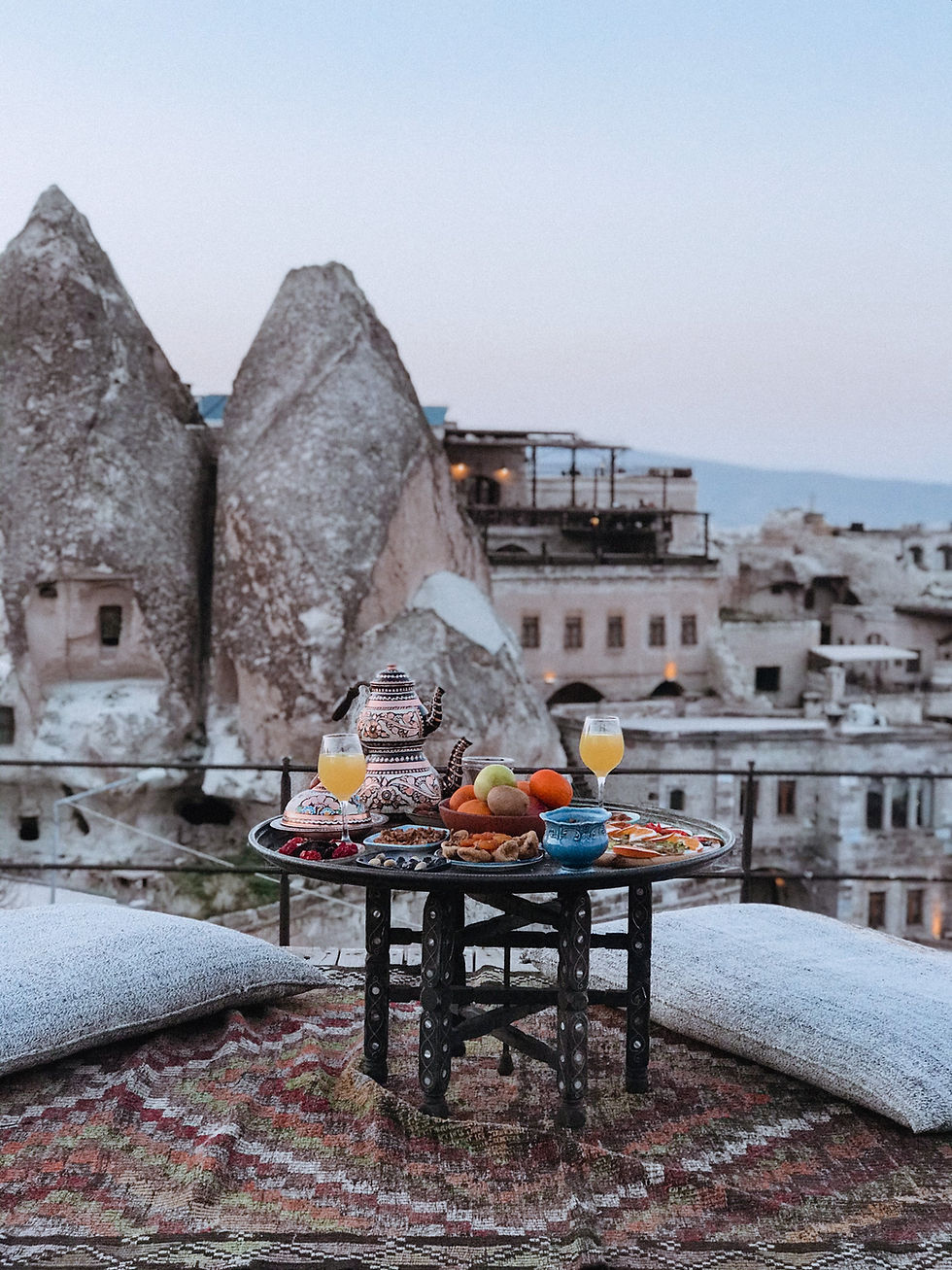Unveiling the Mysteries of Cappadocia: A Journey Through Time
- Content & Communications Department
- Apr 20, 2024
- 3 min read
Nestled in the heart of Anatolia, Cappadocia stands as a testament to the captivating blend of natural wonders and rich cultural heritage. This enchanting region, famed for its surreal landscapes and ancient history, has intrigued travelers for centuries. Let's embark on a journey through time to explore the fascinating history of Cappadocia.

Geological Marvels:
The story of Cappadocia begins millions of years ago, with the eruption of volcanoes that blanketed the landscape with ash and lava. Over time, wind and water sculpted these volcanic deposits into a surreal terrain of towering rock formations, known as fairy chimneys, and labyrinthine cave dwellings. The result is a landscape unlike any other, where valleys adorned with peculiar rock formations stretch as far as the eye can see.
Ancient Civilizations:
The history of human settlement in Cappadocia dates back to the Paleolithic era, with evidence of cave dwellings and rock-cut settlements scattered throughout the region. However, it was during the Hittite period (circa 1800-1200 BCE) that Cappadocia emerged as a significant cultural and political center. The Hittites, renowned for their advanced civilization, established numerous settlements and fortresses in Cappadocia, leaving behind a legacy of impressive rock-cut architecture and inscriptions.

Hellenistic and Roman Influence:
Following the decline of the Hittite Empire, Cappadocia fell under the influence of various Anatolian kingdoms before coming under the rule of the Persian Empire. However, it was the arrival of Alexander the Great and the subsequent conquest by the Seleucid Empire that ushered in a new era of Hellenistic influence. Under the rule of the Seleucids and later the Romans, Cappadocia flourished as a prosperous region known for its fertile lands and strategic importance.
Early Christian Communities:
One of the most remarkable chapters in Cappadocia's history is its association with early Christianity. During the Roman period, Cappadocia became a refuge for persecuted Christians, who sought shelter in the region's network of underground cities and cave monasteries. These secluded retreats served as centers of religious worship and learning, giving rise to a vibrant Christian community that left its mark on the landscape through intricately carved churches and frescoes.

Byzantine Era:
Cappadocia reached its zenith during the Byzantine era, when it became a thriving center of religious and artistic activity. Monasticism flourished, with monks and hermits seeking spiritual enlightenment in the solitude of Cappadocia's caves and valleys. The region's iconic rock-cut churches, adorned with stunning frescoes depicting scenes from the Bible and the lives of saints, attest to this golden age of Byzantine art and culture.
Ottoman Period and Modern Times:
With the decline of the Byzantine Empire, Cappadocia came under the rule of the Seljuk Turks and later the Ottoman Empire. While the region's importance waned over the centuries, it continued to be inhabited by a diverse array of peoples, including Turks, Greeks, Armenians, and Kurds. In the modern era, Cappadocia has undergone a renaissance as a tourist destination, attracting visitors from around the world eager to explore its otherworldly landscapes and rich cultural heritage.
Preserving the Legacy:
Today, Cappadocia stands as a UNESCO World Heritage Site, celebrated for its exceptional natural beauty and cultural significance. From the fairy chimneys of Göreme to the underground cities of Derinkuyu and Kaymaklı, the region is a living testament to the resilience and creativity of the human spirit. As we wander through its ancient valleys and gaze upon its timeless wonders, we are reminded of the enduring legacy of Cappadocia, a land where history and legend intertwine in a tapestry of wonder and awe.
Join us on a journey to Cappadocia, where every rock tells a story and every cave holds a secret waiting to be discovered. Experience the magic of this extraordinary land and uncover the mysteries of Cappadocia, where the past meets the present in a timeless embrace.







Comments